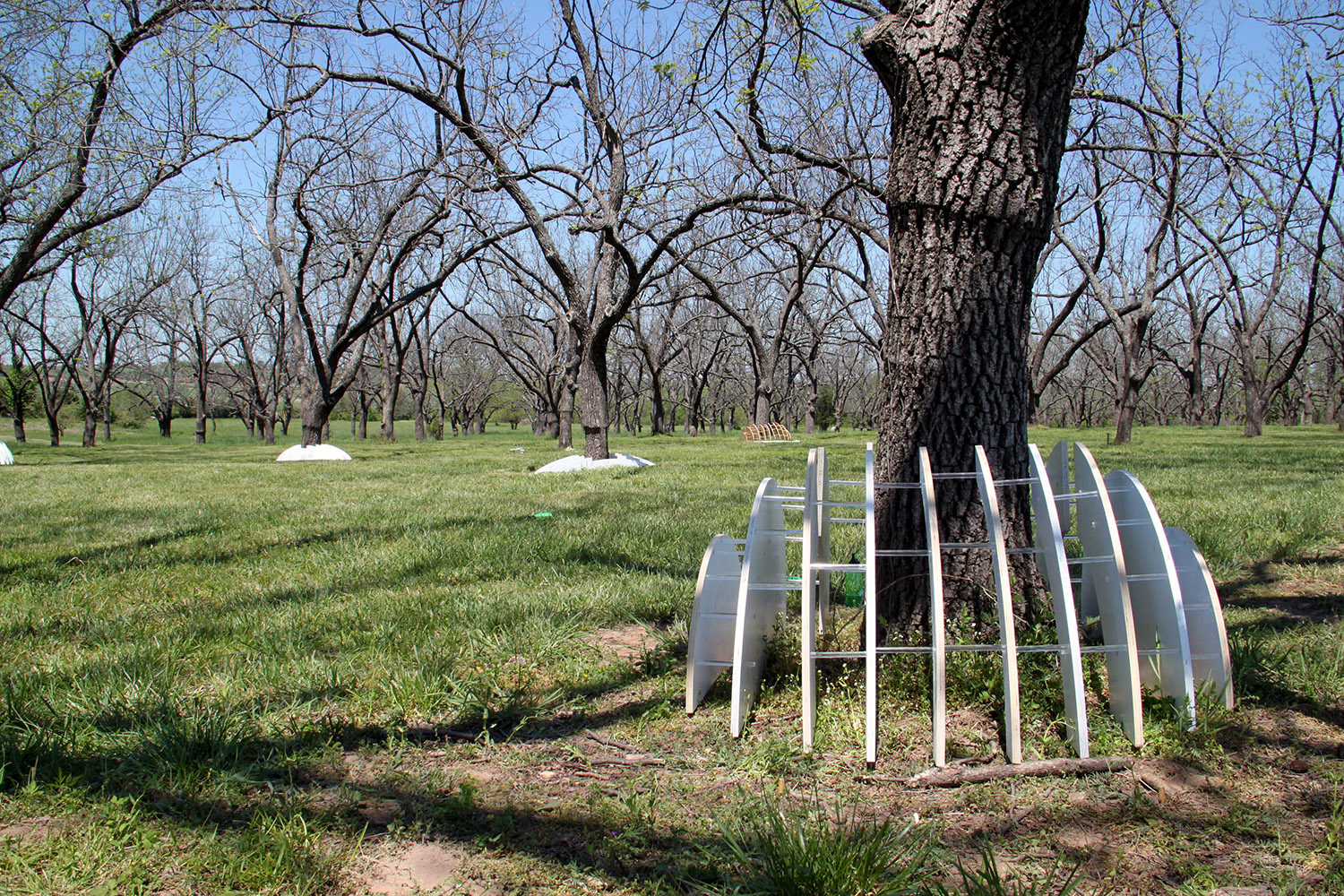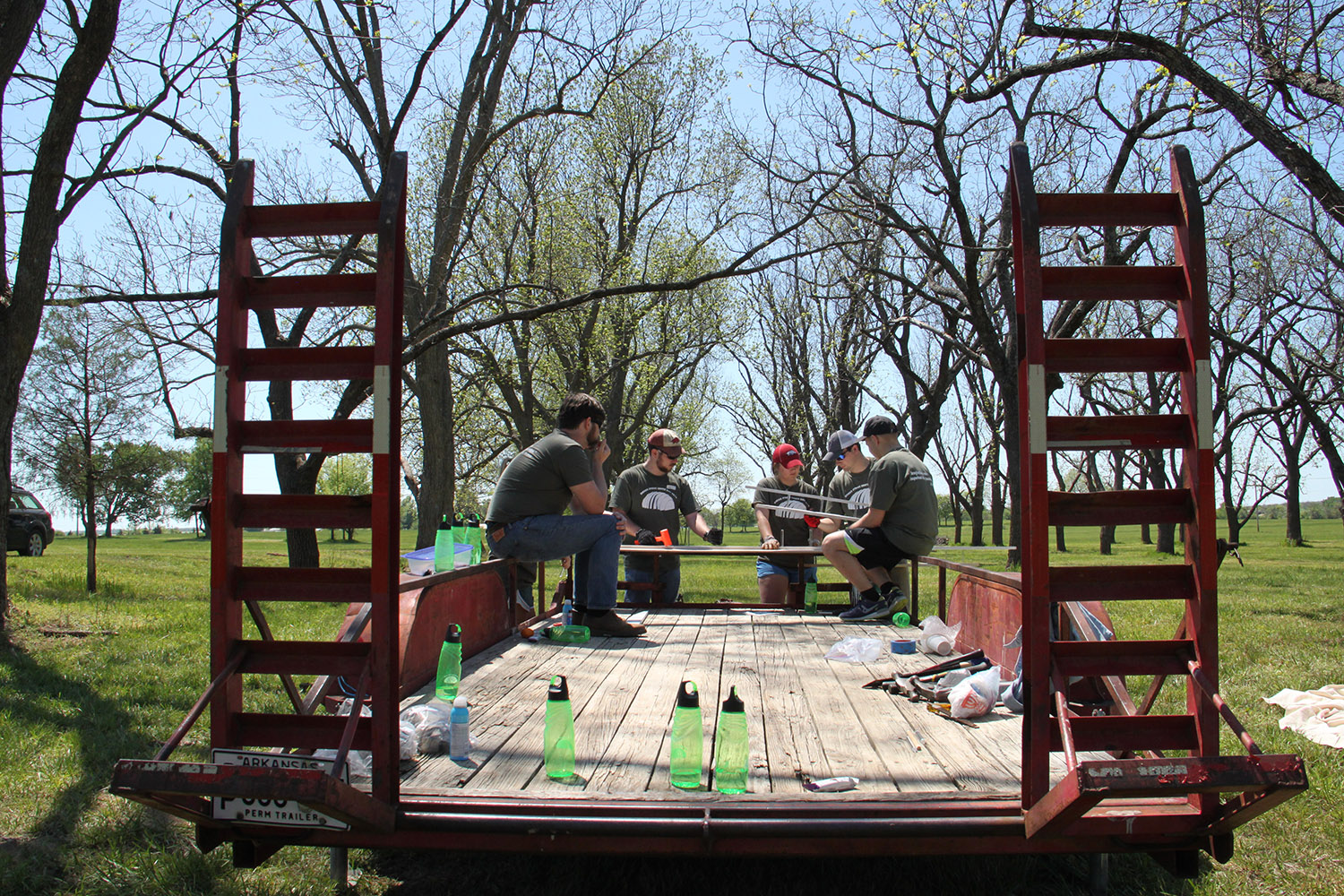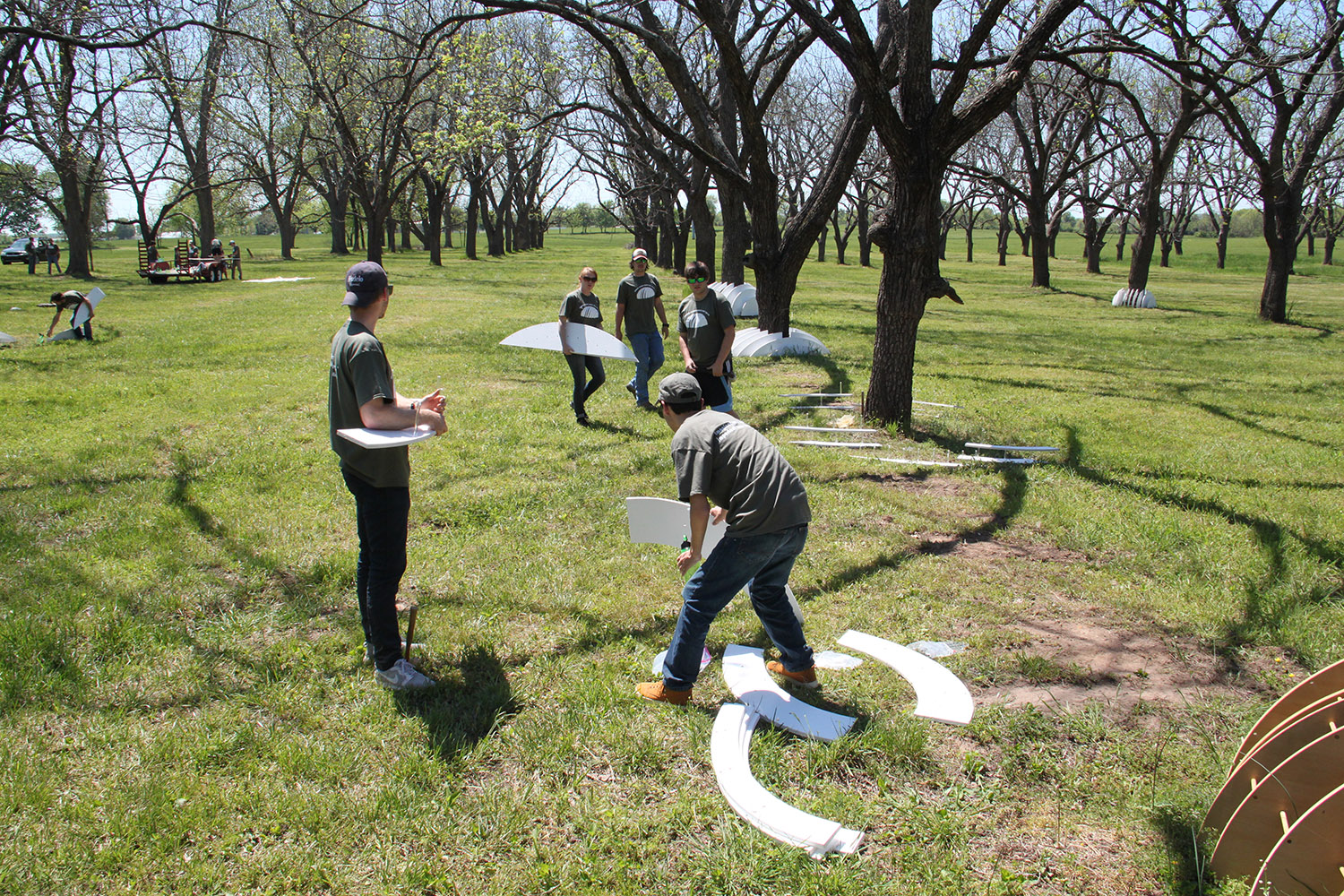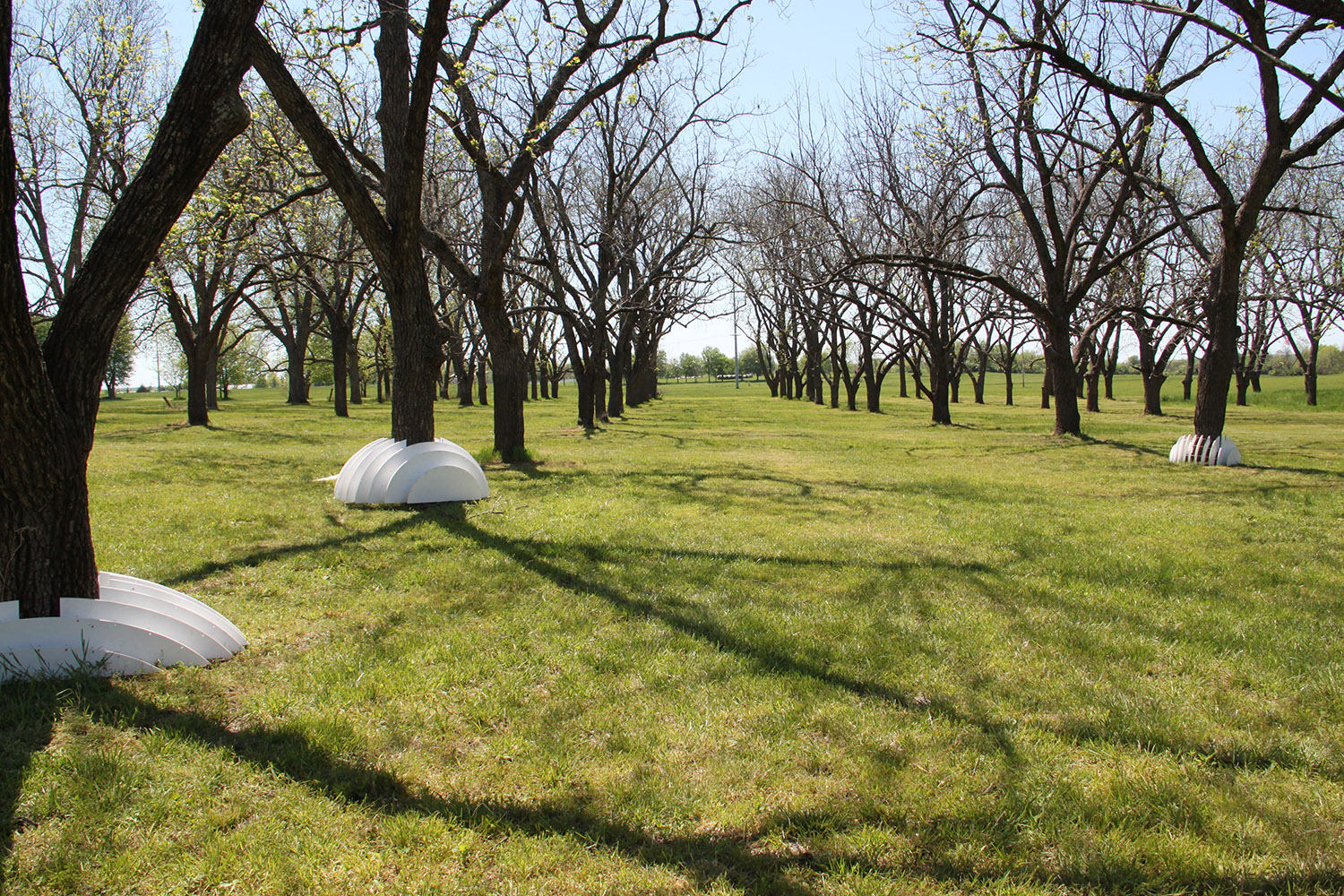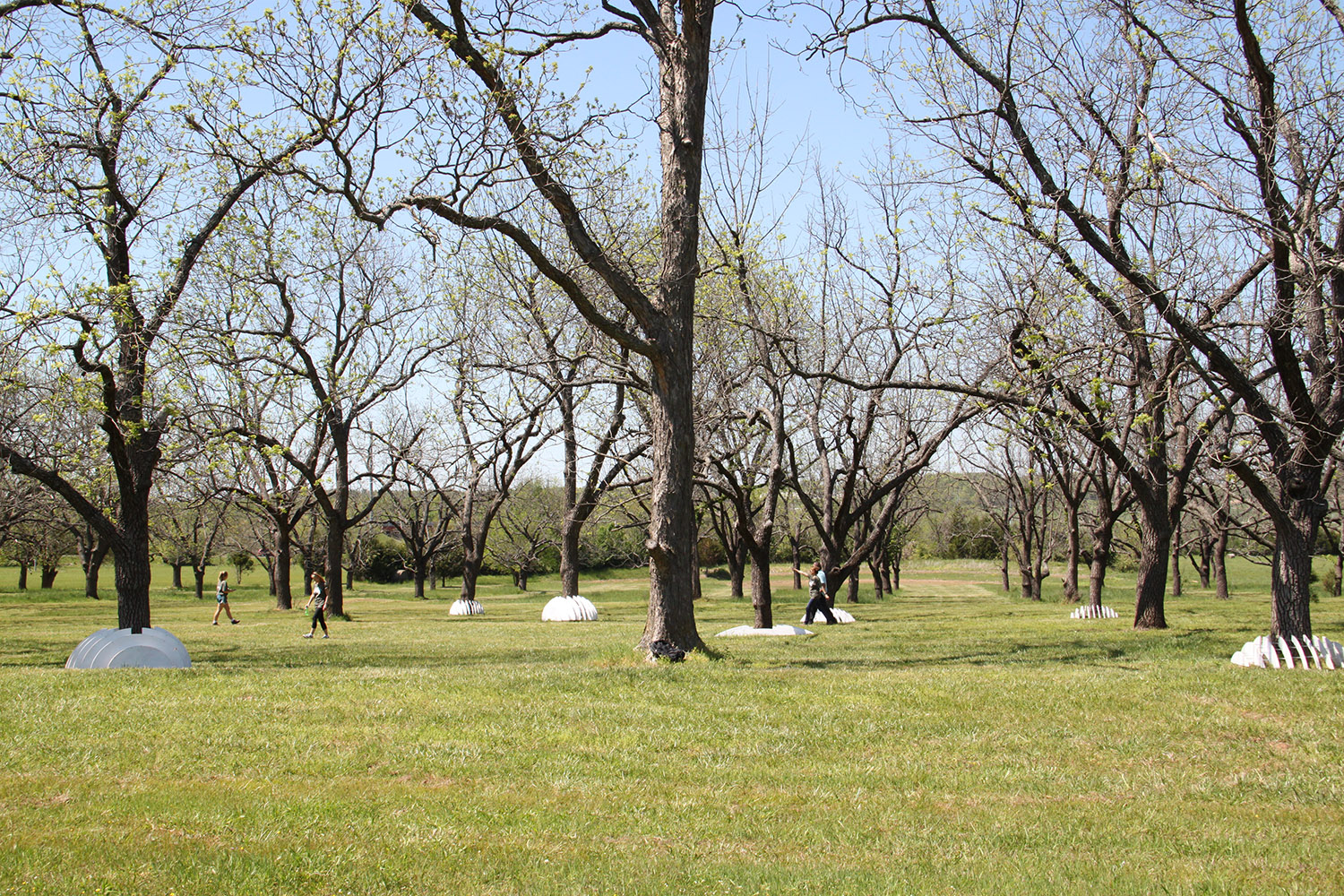
The installation was inspired by and is located on a walnut grove that once belonged to Noah Drake, a former University of Arkansas professor. (Photo by Michelle Parks)
By Lauren Randall
Faculty and students collaborated to create a landscape installation inspired by a walnut grove that once belonged to Noah Drake. The project was conceptualized and designed as a collaboration between three professors and evolved into an outdoor learning opportunity for students.
Students from landscape architecture and local high schools met early the Saturday after Earth Day 2016 at the walnut grove in Fayetteville to construct a design created by Edmund Harriss, a clinical assistant professor in the Department of Mathematical Sciences, together with Carl Smith, an associate professor of landscape architecture, and Angela Carpenter, a visiting assistant professor, both in the Fay Jones School. This was a chance for students to become more exposed to the possibilities of landscape architecture, particularly in collaboration with other disciplines. The installation followed several months of design and conceptualization between the three faculty members.
“It wasn’t meant to be a difficult exercise, but really to introduce the students to the ideas of collaboration and how different disciplines working together can result in some really astounding products and process,” Smith said.
That Saturday, the participants separated into teams. Using a design and construction protocol provided by the professors, each team was supplied with a kit of plywood pieces already painted white, a sack of dowels and several mallets. Each piece was labeled, and a grid was created to help guide students in the process.
Dome-shaped sculptures were assembled at the base of specific trees, selected based on a pattern derived from underlying geometries expressed by the site. For the aspiring landscape architects, this installation provided an opportunity to build on site as well as demonstrate the power of collaboration and drawing from other disciplines.
“It is a chance to get out and do something in the landscape, and explore that aspect of landscape architecture, but also hopefully to think about the different ways of interpreting space,” Harriss said. “You can see more of the structure of the site at different levels, and it’s a chance to be part of an artistic construction.”
Neal and Gina Pendergraft, the owners of the land, provided a catered lunch and had T-shirts and bottles made for the event on April 23. By lunchtime, the students were two-thirds of the way done with assembling the installation. During lunch, the professors discussed the history of Drake and his studies, and the installation was completed about an hour later.
The inspiration and construction for the project began with Smith and Harriss, a researcher in geometry and mathematical art, through a series of discussions they’d had since fall 2015; they were later joined by Carpenter after she began co-teaching with Smith in the spring 2016 semester.
“It’s just been fascinating to work with people from different backgrounds, with different ideas, and it’s been really educational to figure out how you proceed in a design project without any one person claiming ownership,” Smith said. “To me, it embodies the joy of collaboration more than anything else.”
Each instructor brought his or her own sense of discipline and expertise to the project and worked cohesively to create the design that was built. Harriss worked specifically on the parametric models for the installation, Carpenter played a key role in the fabrication of the materials used to build the instillation, and Smith focused on the aesthetics of the landscape – much of this informed through discussions with Harriss and Carpenter on site.
“I think there are choices and decisions that we went with based off of something that Edmund conceptualized that was out of my thinking. It just makes you look at things differently,” Carpenter said. “Working with Carl, he just has a more tactile way of even drawing and just observing the landscape. I thought it was a great collaboration because of the decisions and the design direction that we took. It just wouldn’t have been what it was without the other two.”
The landscape was integral to the design, and the group members wanted to make sure that they didn’t take away from the sense of place. This walnut grove is almost 100 years old, and it originated as an agricultural experiment. Professor Drake was a nationally renowned expert in black walnuts who would write to people living all over the United States, asking them to send their best black walnuts to Arkansas in order to create a better black walnut, Smith said.
“It is a large grove of walnut trees planted on a geometric pattern that is still very visible,” Harriss said. “That brings in questions of the different interpretations of space and geometry that definitely gave space to the mathematics that I bring and the interpretation of landscape, and also the understanding of space through design that we all bring together.”
The walnut grove is part of a broader landscape that has been a key site for Smith, after he worked there with an urban design studio during an earlier semester (see p. 8). Its physical, historical and cultural aspects all were factors that inspired the design for this project, Smith said.
“All we want to do really is celebrate the beauty of that place and its history, but to do so in sort of a non-didactic way,” Smith said. “With something that was creative and responded to the specific character of that landscape.”
Walnut shells from Drake’s lab were part of the inspiration, with the dome-shaped sculptures resembling half of a shell.
“Just looking at that shell and how beautiful it is, and his desire to have this kind of soft shell – like the best soft-shelled walnut in the state – that kind of starting pushing some conceptual ideas. ‘How do we want it to feel?’” Carpenter said.
The materials used were three-quarter-inch plywood and acrylic dowels for connector pieces. The plywood was coated in exterior-grade paint to withstand the impact of weather. This installation will be at the walnut grove for some time to see how it evolves with the landscape over the different seasons, Carpenter said.
